Friday
I dragged myself from my sick bed for our pre-booked (and paid for) April weekend getaway. I admit I wasn’t looking forward to it that much as I’d been weak and pathetic with a bad cold that had gone to my chest, and all I wanted was to lie about at home in my pajamas. But I knew I wouldn’t have to do anything as the Man was prepared to mollycoddle me if necessary – and a break in the caravan is always relaxing.
This trip was to Ashford in Kent. A first time proper visit to this part of the UK for us, although we did remember a dismal weekend away in Folkestone many many years ago. It was motorway pretty much all the way and would have only been about 90 minutes but for a lorry breakdown on the M25 hampering us for the first part of the journey.
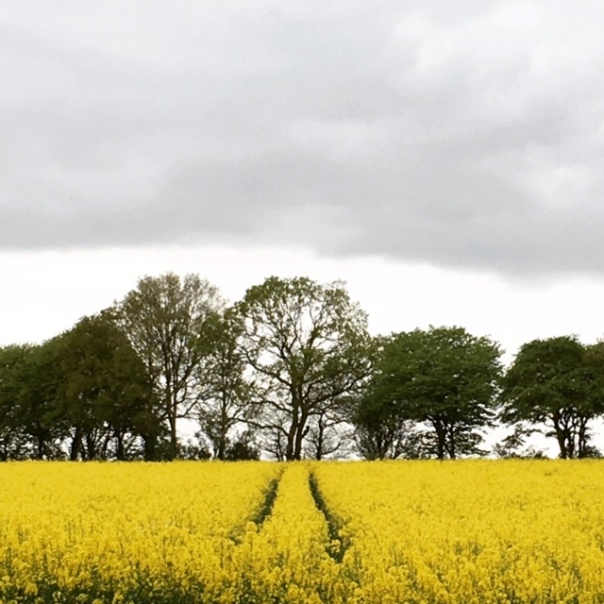
We arrived at Broadhembury Holiday Park to a very warm welcome. The lady at reception and the man that guided us to our pitch were very accommodating and full of information about what to do in the area. The site was generally neat and clean with a just a couple of ‘abandoned’ looking vans tucked away around the edges – presumably these are the seasonal pitches that the site advertises. The shower/toilet block was lovely and warm and welcoming, with lots of room in the showers cubicles. But there wasn’t much else to the park. The dog walk was just a roped off one way track with fields full of brilliantly beckoning yellow rape seed tantalisingly out of reach, and the reception and shop closed at 2pm (and they’d sold out of local area OS maps). But all in all a nice quiet site with our fully serviced pitch serving all our needs (including reasonable TV reception!). The hard standing (which we are still debating whether we prefer to grass) lost out a little in the popularity stakes when I tripped over the new long dog lead and landed knee, hands and face first on the little sharp stones and sustained severe shock and minor, but aggravating injuries. Once I’d got my wind back and waved away a fellow vanner that had come over to help, I applied antiseptic and plastered up my knee and resolutely got on with setting up camp feeling very old, bruised and vulnerable!
We had a quiet evening with a little walk around the site and a lovely meal with lots of Prosecco to calm my jangled nerves. I slept a lot better than I thought I would!
Saturday
Even though we woke to a grey drizzle we’d both slept well and felt ready for anything. The cold shower in the van didn’t even put me off (apparently the water heater was mistakenly switched off!).
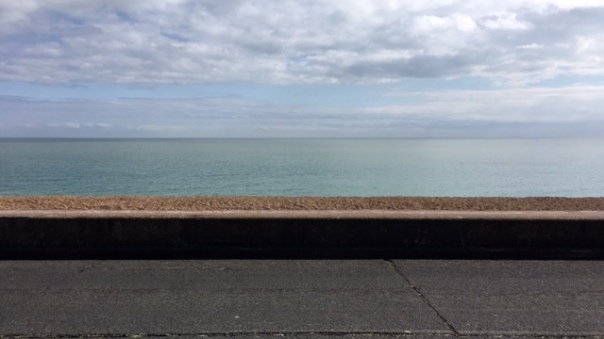
After our usual leisurely breakfast we set off to explore Folkestone. We had a lovely wander around the town and harbour, but the town centre seems to be suffering like many others we visit. Pockets of neglect and abandonment, probably due to out of town shopping malls and mega stores, but Steep street lifted our spirits with quaint bespoke shops selling artisan goods on a charmingly cobbled walkway that was in fact pretty ‘steep’!
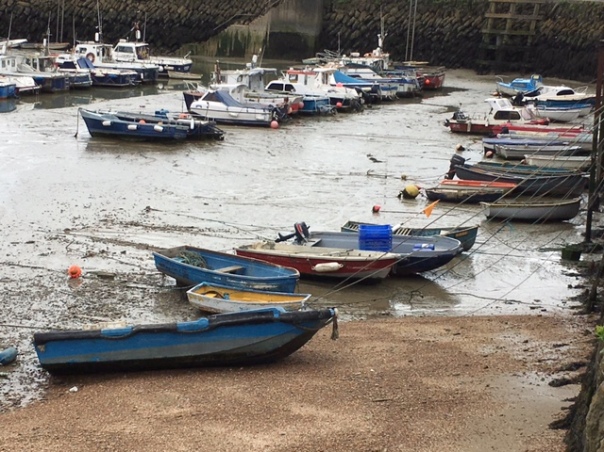
From here we drove along the coast road towards Hythe, parking in Seabrook and walked along the pebble beach to Hythe and then back along the peaceful footpath alongside the Military canal.
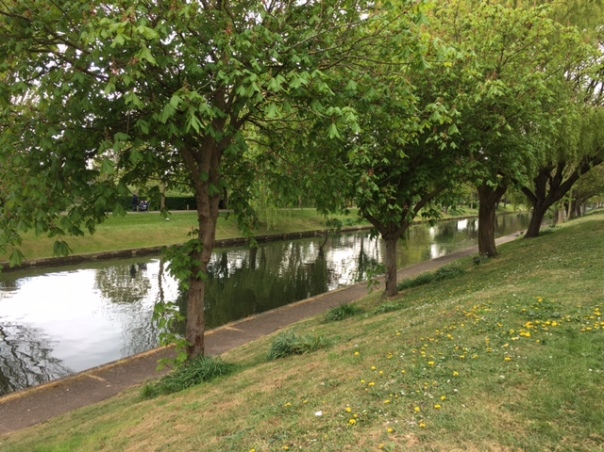
The Royal Military Canal runs for 28 miles between Seabrook near Folkestone and Cliff End near Hastings and was conceived in 1804 as a defence against the possible invasion of England during the Napoleonic Wars. The canal was completed in April 1809 at a total cost of £234,000. However, the canal never saw military action, it was used to try to control smuggling from Romney Marsh and a barge service was established from Hythe to Rye. The canal was abandoned in 1877 and leased to the Lords of the Level of Romney Marsh.
A public path runs alongside the entire length of the canal, forming part of the longer 262km Saxon Shore Way. Aside from being historically significant in its own right, the path passes by numerous WW2 pillboxes and the unusual acoustic mirrors, the historic cinque port towns of Hythe, Winchelsea and Rye, the 12th century St Rumwold’s church, and Lympne and Camber castles (Wikipedia).
It was a lovely walk made all the more glorious when the sun came out. It did my sick and damaged body the power of good.
Sunday
The day dawned a bit brighter than yesterday, but with a bit more chill in the air. I hadn’t slept too well but it didn’t matter because we were on caravan time and could have a lazy morning with our full English breakfast listening to the Archers. This was only slightly marred by another shower fail – the water ran out just after I’d applied conditioner and I had to wait shivering while the Man refilled the water butt!
Today the plan was a visit to Tenterden, on the way to Sissinghurst, and the Gibbet Oak Farm Shop and Cidery on the way to Tenterden. The farm shop was a treat for the Man as pay back for the times he’s spent waiting outside charity shops with the dog so I can explore the local bargains. While he wandered among the cheeses, breads and ciders I wandered around outside with the Dog and felt I was on the set of the ‘Darling Buds of May’! The place was strewn with old gardening equipment, wooden hand carts, heavy rollers and old wooden vegetable boxes that would fetch a fortune in some chic Chelsea shop!
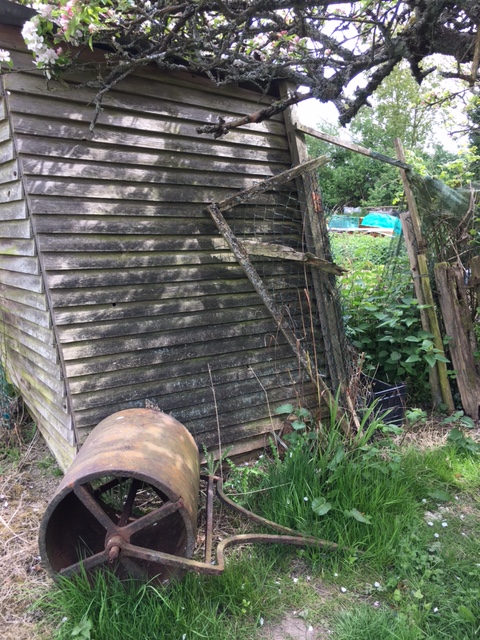
From here we went into Tenterden and had a pleasant wander around this lovely town. Lots of local shops selling bespoke knick knacks, which was such a contrast to yesterday’s town visit to Folkestone.
After a coffee stop we made our way to Sissinghurst Castle and Gardens. We weren’t allowed in the house or gardens with the Dog but had a lovely walk around the estate and lakes, stopping halfway for a coffee and a mooch around the National Trust shop selling the same things as they sell in all their other shops at the same exorbitant prices!
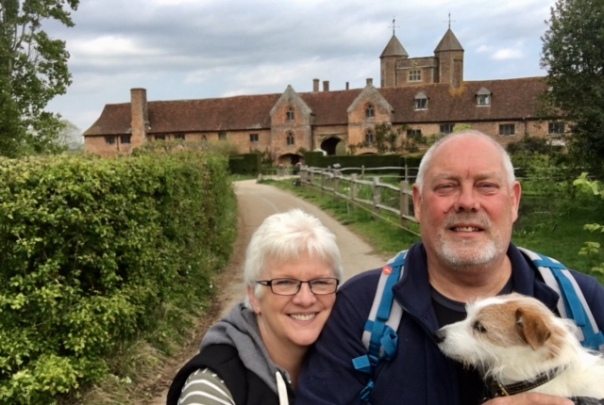
Sissinghurst’s garden was created in the 1930s by Vita Sacckville-West, poet and gardening writer, and her husband Harold Nicolson, author and diplomat. Sackville-West was a writer on the fringes of the Bloomsbury Group who found her greatest popularity in the weekly columns she contributed as gardening correspondent of The Observer. The garden itself is designed as a series of ‘rooms’, each with a different character of colour and/or theme, the walls being high clipped hedges and many pink brick walls. The rooms and ‘doors’ are so arranged that, as one enjoys the beauty in a given room, one suddenly discovers a new vista into another part of the garden, making a walk a series of discoveries that keeps leading one into yet another area of the garden.
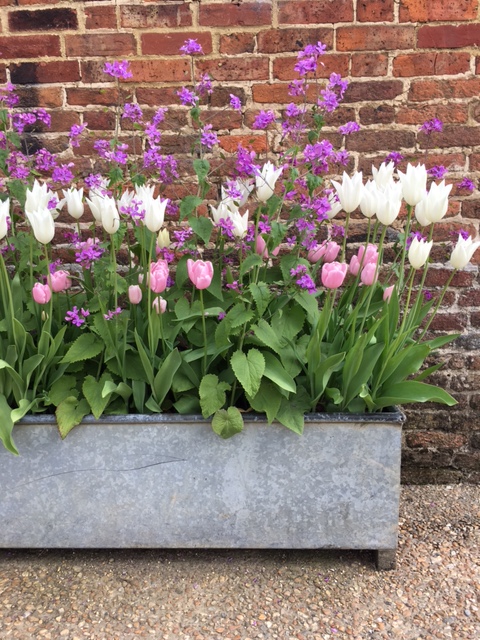
The site is ancient; “hurst” is the Saxon term for an enclosed wood. A manor house with a three-armed moat was built here in the Middle Ages. In 1305, King Edward I spent a night here and in August 1573 Queen Elizabeth I spent three nights. After the late 17th century, the building had many uses: as a prisoner-of-war camp during the Seven Years’ War; as the workhouse for the Cranbrook Union; after which it became homes for farm labourers.
Sackville-West and Nicolson found Sissinghurst in 1930 after concern that their property Long Barn, near Sevenoaks, Kent, was close to development over which they had no control. Although Sissinghurst was derelict, they purchased the ruins and the farm around it and began constructing the garden we know today. Sissinghurst was first opened to the public in 1938 (Wikipedia)
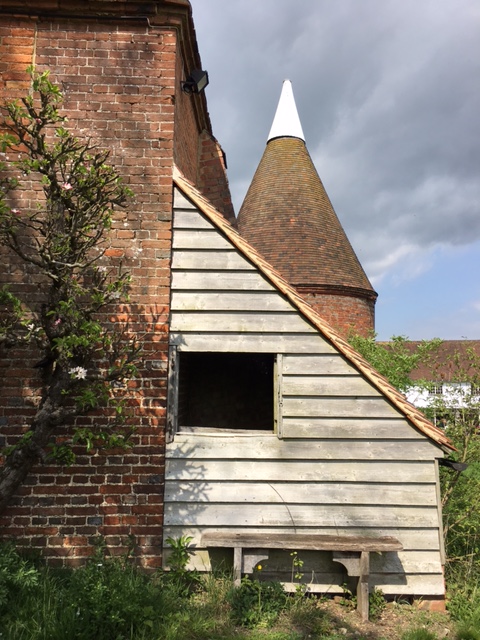
The estate is lovely and well worth a visit and was no doubt made all the more appealing by the wonderful Spring weather. We did a 4 mile walk around the estate getting away from the crowds and enjoying the fields of new born lambs, and all the Spring flowers in the hedgerows; wild garlic, primroses, rape seed fields and bluebells.

We drove back to the van through lovely the Kent countryside dotted with oast houses, and trim white boarded homes in neat chocolate box villages.